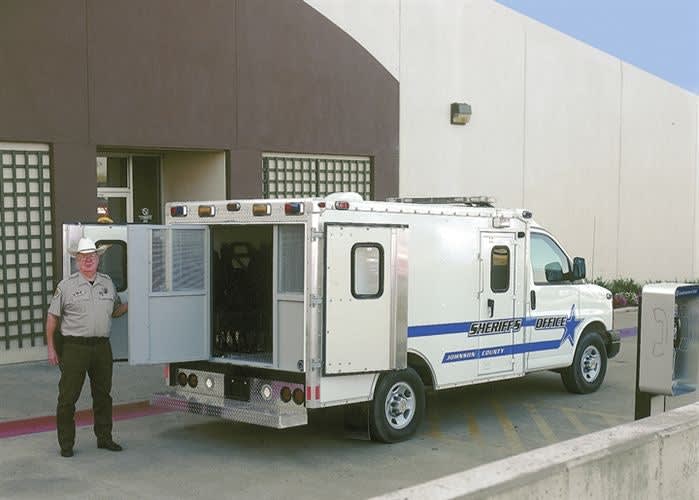As much for the prisoners' safety as for the safety of the officers, inmates can be separated by powder-coated steel or aluminum dividers. These separation cells help segregate prisoners for safety, security, and convenience.
The general population of inmates usually sits in the back of the bus. A couple of rows of seats can be separated to accommodate female inmates or prisoners of a different security group. At the very front of the prisoner seating area, a one-person section can be installed to hold an especially difficult inmate. When Mattman Specialty Vehicles installs this type of cell on its buses, it is constructed with a solid lower half and a graded upper portion so officers can more easily monitor the person inside while keeping him or her securely restrained. A Lexan covering protects officers from spitting.
For security reasons, all walls are reinforced with steel and windows are made of shatterproof glass and contain various safety features to prevent escape.
"We basically reinforce the interior to make it prisoner-proof," says Bruce Barnes of Mattman Specialty Vehicles.
Most prisoner transport vehicles don't require any form of attached restraints. Handcuffs and leg irons in conjunction with separation cells are usually enough to keep inmates secure. Also, separate restraints for each inmate make moving into and out of the vehicle easier for both inmates and officers. MCI builds its buses with low-to-the-ground steps so prisoners can easily board the bus on their own while wearing leg irons.













